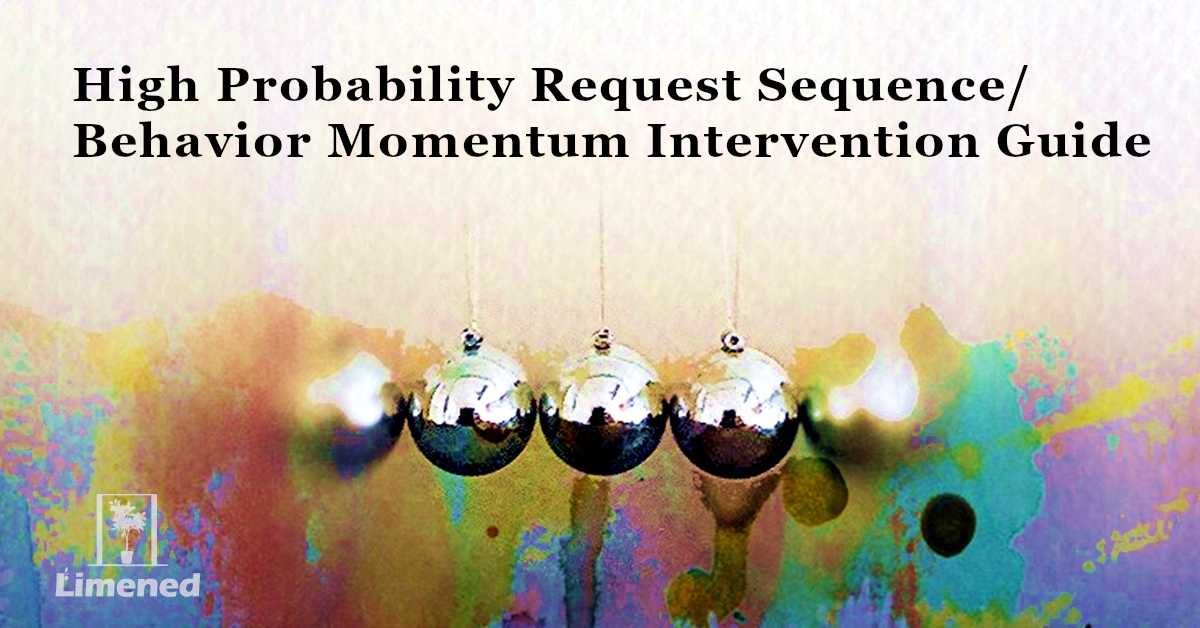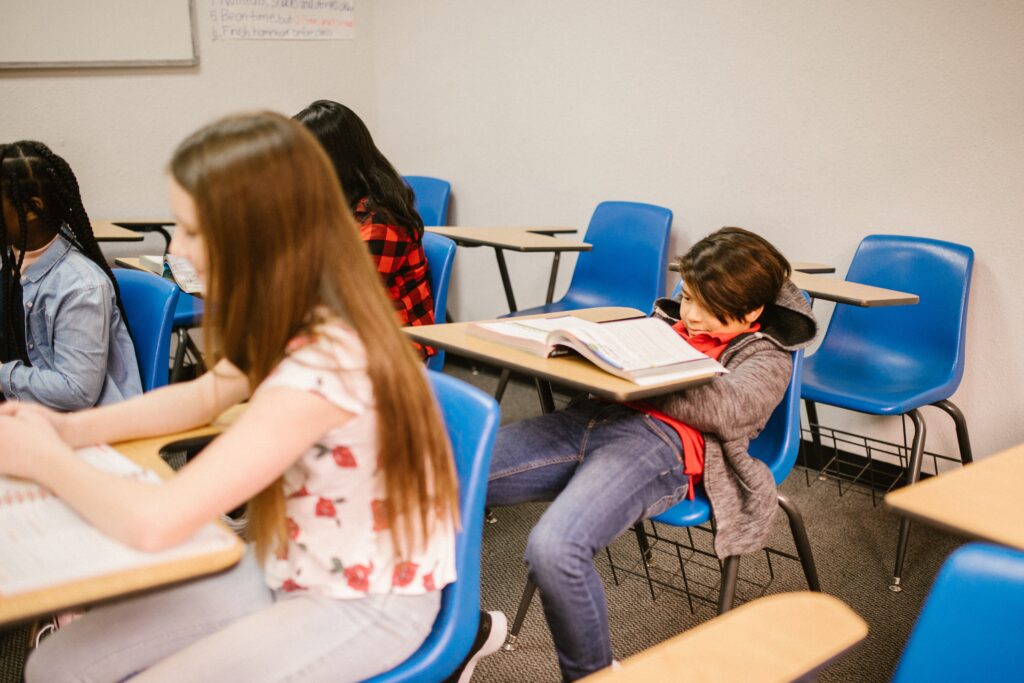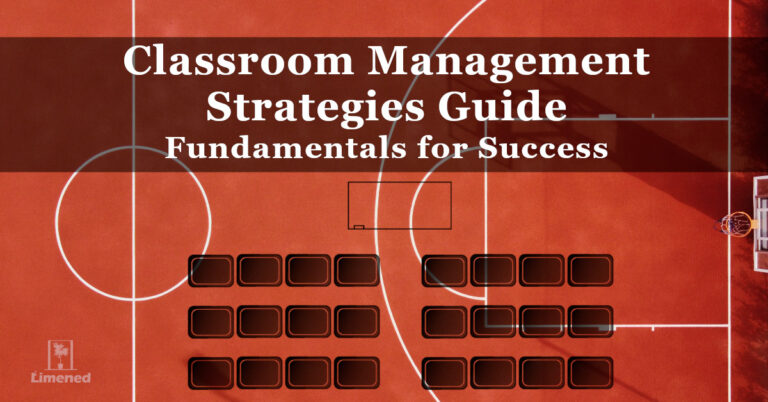Sometimes it feels like a student is just stuck. Frozen. Nothing we do can get them to move. At least not in the direction we’re trying to go.
Non-compliance and defiance from a student are like this. When a student doesn’t follow directions—or just flat out refuses to—we can quickly realize how little control we have in the classroom.
When it comes to students, we can’t make them do anything. At least, not without going to jail! What we have, instead, is just control over ourselves and a good amount of the classroom environment. And we can only influence student behavior to increase the probability of student success.

So what if we could do something differently to get a non-compliant student on a roll? What if we could grease the wheels a bit to get a stuck student moving?

That’s where the idea of behavioral momentum comes in. Behavior momentum is a behavioral principle borrowed from physics, specifically Newton’s first law of motion that bodies at rest stay at rest & those in motion stay in motion.
Applied to student behavior, the idea is that students tend to keep doing what they’re doing. So if we can do something to foster a little bit of compliance from a student, then they’ll tend to keep on following directions. That is, we can get them on a roll.
What this means, then, is (to borrow some more physics) that a stuck student is full of potential. Like a boulder at rest on top of a hill. Once we activate this potential, making it kinetic, they have the ability to pick up speed and be successful.
So this is where high-probability request sequences enter the picture. High probability request sequences are a strategy for applying the principle of behavioral momentum to create a student compliance snowball effect. Once you get a little bit of compliance for something easy (such as things the student likes to do), it’s easier to foster compliance for the tough stuff (like all the tasks we actually need students to do). (Jump down to my favorite video example).
What are high probability request sequences?
High probability request sequences are a strategy based on behavior momentum for giving directions that increase the likelihood students will do things they usually won’t.
At times, a student may be unlikely to comply with certain directions or tasks. These can be considered low probability requests; that is, there’s a good chance the student won’t do them.
What’s important to remember, though, is that for pretty much any student—even those who hardly do anything we ask of them—there are some things they will do. Or there are things they choose to do on their own that they would do if we asked. These are directions they would likely comply with. They’re high probability requests.
To implement high probability request sequences, a teacher delivers a brief series of high probability requests to a student before giving a low probability request. This gets the student on a roll of compliance that greatly increases the odds of student success with our directions.
What behavior problems can high probability requests help with?
Applying behavior momentum through high probability request sequences is a pretty targeted intervention focused primarily on student compliance with directions.
 Photo by RODNAE Productions from Pexels
Photo by RODNAE Productions from Pexels
The intervention is most helpful for compliance-oriented behavior problems related to following directions or expectations from start to finish. Misbehaviors like not following directions, overtly refusing to follow directions, taking a really long time (latency) to begin a task or to comply with something else, putting head down on desk instead of working, stopping partway through without completing the directions, and so on.
High probability requests have been used for a variety of related problems too, such as problems transitioning from one activity to another, difficulty with social communication, and various academic targets (like acquiring new words, completing writing tasks, learning math facts, completing challenging assignments).
I surveyed a school recently to rank their top behavior concerns (based on their own discipline categories). Their results (above) correspond with what’s often found in research; compliance-related behavior problems are one of the most frequent and pressing challenges for teachers. High probability requests are a good fit for this need, since the strategy is practical and effective.
Are high probability requests an evidence-based practice?
A team of researchers synthesized results from 22 studies of high probability requests for 51 K-12 students, specifically evaluating the quality and nature of the evidence base to determine if the practice is evidence-based. 16 studies met their criteria for quality, rigor, & outcomes (based on the Council for Exceptional Children’s evidence standards). Results from these studies led the researchers to classify high probability requests as potentially evidence-based (which essentially means there’s substantial evidence in favor of using this intervention but we don’t have quite enough research yet to fully call this an evidence-based practice). Using behavior momentum has had a significantly positive impact on a variety of important student behaviors, such as increasing compliance, improving engagement, decreasing latency to begin tasks, reducing prompts needed, and improving academics (e.g., spelling mastery, number of words written).
How to implement high probability request sequences?
Systematically implementing high probability requests involves a few fairly simple steps:
- Identify the low probability request(s) you want to prioritize for intervention. Consider when the student is unlikely to follow directions or comply with requests or shows some form of resistance. Focus on behavior that’s a high priority to start with.
- Brainstorm possible high probability requests. Come up with a list of many different brief, easy requests or directions you think the student is very likely to follow willingly. You can use observations of what the student tends to go along with as well as interviewing others who know the student well (e.g., parents/guardians, other teachers). You can also look for things that naturally occur that the student does (e.g., will she give you a fist bump on the way through the door if you hold your hand out?). Ideal requests are those that can be completed rapidly; bonus points if they’re topically relevant. However, they can be almost anything (as you can see in the video examples below); for example: “Please write your name on your paper”, “Can you pass these out for me?”, “Can you get out our class whiteboards?”, “Gimme a high five”, “Take out your iPad”. A longer list is better so you can vary the ones you use. So aim for at least 8 to 10 options.
- Test out your high probability requests. Now, here’s where you can go from having these requests in your bag of behavior tricks to being able to implement a more successful intervention consistently. By first periodically trying out these easy requests at different times throughout the day, you can make sure they are actually going to grease the wheels of student compliance. The last thing you want is to lose your behavioral momentum if the student refuses to do one of your high probability requests when you’re actually implementing the intervention. So test out each one a few times, and get rid of the ones that lead to non-compliance or even—oh no!—other problem behavior. (Also, feel free to celebrate after this step since you’re being a behavior scientist!)
- Deliver a series of high probability requests, following each one with reinforcement once the student complies. When it’s time for that low probability direction or task, give several (about 3-4) high probability requests immediately beforehand. For each one, wait for the student to comply, then provide some form of reinforcement. A strong fit here would be to provide behavior-specific praise after each instance of compliance. Then immediately follow with the next high probability request to maintain the momentum.
- Deliver the low probability request. Now that you’ve built up behavior momentum with the student, provide that difficult request that you want the student to do. It’s best to do so as close to immediately after the last high probability request as you can manage (<10 seconds ideally).
- Monitor the impact of the intervention, using data to guide your decision-making. As with all behavior interventions, data will play a critical role in guiding your intervention. Evaluating misbehavior can be pretty darn subjective given how stressful it is unless we have a solid anchor point to ground us in objectivity. That’s where good data comes in. For example, if the probability of the student complying improves with this intervention gradually at first (e.g., student complies only a third of the time before intervention but half the time after implementing it), it may feel like the intervention isn’t working at all when really the data will show its benefits. Consider how you will record data about the student’s behavior and how often you will analyze it to guide your efforts.
High Probability Request Sequence Resources, Templates, & Examples
Video Examples of High Probability Request Sequences
My favorite behavior momentum example—it’s so joyful!

UNL Behavior Momentum Elementary Example
High Probability Request Tips
- If you’re searching for more info on high probability request sequences, you might run into the term high-p requests used interchangeably since the full name’s such a mouthful! Behavior momentum, high probability request sequences, and high-p requests are all used in common to describe this intervention.
- It’s best not to deliver the same set of high probability requests in the same order. This is why it’s helpful to come up with a large list of options, so you can vary what you use with the student and maintain the impact you want to see.
- Using high probability requests is not a permanent approach, like most interventions, so these should be faded out as the student becomes successful. If you are regularly seeing student success, then gradually reduce number of high probability requests you deliver before the low probability request.
- It’s likely obvious, but this strategy can’t work if the student isn’t actually able to comply with the low probability request. For example, if the student has a skill deficit, no amount of greasing the wheels of compliance is going to make them able to perform that skill. So make sure the student is capable of whatever you’re asking.
- Behavior momentum can also be applied to instructional activities and academic tasks like worksheets (for example, you can build in easier work/items/problems first before the student faces more complex work that may lead to shutting down or disengaging).
- Be sure to reinforce each time the student complies with a request—highlighting and reinforcing student success each time is a key ingredient!
- Try to use high probability requests that are related in some way to the low probability request. For example, if the low probability request is to complete independent math work, requests like “clear off your desk”, “take out your pencil”, “write your name on your paper”, “please get your manipulatives from your cubby” might be a good fit.
- Interventions like this work best in well-structured, consistent, predictable, positive classroom environments that feature five foundational classroom management strategies.






















